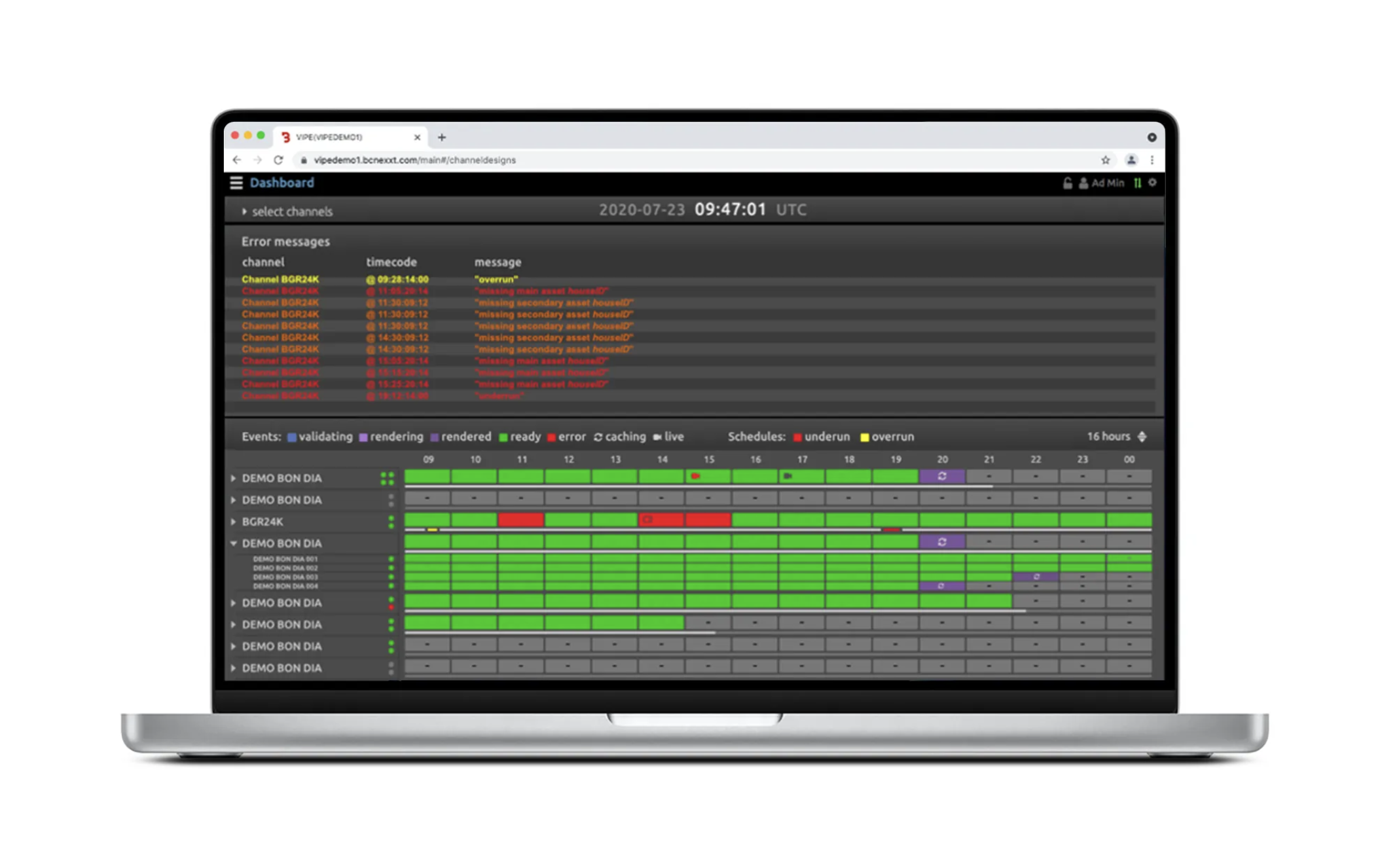Thriving Amid Market Consolidation—Dispelling Myths About Cloud Playout for Broadcasters
By Graham Sharp. Originally appeared in TVBEurope’s March/April magazine issue.
The broadcasting industry’s first foray into the cloud was met with disappointment. Early “lift and shift” deployments, which simply transferred existing systems to the cloud without adaptation, fell short of expectations. Costs soared, reliability suffered, and doubts about the cloud’s potential began to grow.
Now, we’re entering a new chapter. The rise of cloud-native solutions—designed specifically for the cloud—is transforming the way broadcasters operate. These advancements offer true scalability, significant cost savings, and improved efficiency, paving the way for smarter media orchestration.
With growing pressure to streamline operations, cut costs, and meet the demands of multi-platform audiences, broadcasters are finding advanced cloud-native playout technology to be the key to success. Yet, lingering myths around the cloud being expensive, unreliable, or insecure remain barriers to adoption. The reality? The cloud is finally delivering on its promise: flexible, scalable, and cost-effective solutions tailored for today’s challenges.
Dispelling Cloud Myths
Myth 1: The Cloud is Too Expensive
Many broadcasters view cloud deployment as costly, but this perception often arises from comparing it to traditional systems with hidden expenses, such as maintenance, energy, and infrastructure costs spread across different budgets. Cloud-native solutions remove these hidden costs with pay-as-you-go models, allowing broadcasters to pay only for the resources they use. For instance, minimal resources are needed for file-based operations, while computing power scales dynamically for live broadcasts or complex tasks. This flexibility also eliminates the need for upfront capital investments required by on-premise systems, making cloud deployment a more efficient and cost-effective solution.
A simple comparison illustrates this efficiency. A virtual machine might run at 100% capacity all day, while cloud-native solutions dynamically scale, reducing resource usage by as much as 75%. This translates into significant savings over time, allowing broadcasters to reallocate budgets toward innovation and audience engagement.
Myth 2: The Cloud is Not Reliable Enough for Playout
Reliability concerns remain prevalent, but technological advancements in cloud infrastructure have rendered this myth obsolete. Cloud-native architectures leverage containerized microservices and dynamic redundancy measures, achieving unparalleled reliability, such as six nines (99.9999%) availability.
Unlike legacy systems prone to single points of failure, cloud-native solutions distribute operations across redundant clusters. This architecture ensures seamless transitions between zones or systems in the event of an issue, minimizing the risk of on-air disruptions. Broadcasters like Sky are leading the charge, playing out nearly 200 channels from a fully cloud-based platform with resounding success.
Myth 3: The Cloud is Not Secure
Broadcasters managing sensitive media assets are naturally concerned about security, especially given the high stakes of content distribution. However, most cloud providers are pioneers in cybersecurity. They employ encryption methods to secure data at rest and in motion, offering robust compliance certifications that exceed the capabilities of many internal IT teams.
Media companies are increasingly joining the ranks of banks and healthcare providers in trusting cloud security. Providers invest significantly in defending against emerging threats, which ensures broadcasters can securely manage their assets without allocating excessive internal resources to cybersecurity maintenance.
Leveraging Cloud-Native Technology Amid Consolidation
Broadcasters navigating the challenges of mergers, acquisitions, and budget cutes face unique complexities. Integrating disparate workflows, unifying infrastructure, and maintaining service continuity can prove daunting. Cloud-native playout provides a scalable, flexible framework to streamline these processes.
By disassembling the playout process into modular, containerized components, broadcasters can transition operations without major disruptions. Automation further enhances this effort, simplifying system integrations and ensuring smoother post-merger workflows. This agility provides broadcasters with the operational resilience needed to adapt to changing demands with benefits that can't be understated:
Cost Efficiency
Beyond dynamic scaling and TCO savings, automated QC tools allow broadcasters to maintain high operator-to-channel ratios, greatly reducing staffing costs. Additionally, resource optimization ensures energy and infrastructure expenses remain minimal.
Scalability and Flexibility
The cloud’s flexibility goes beyond cutting costs. Broadcasters can quickly launch pop-up channels for major events or experiment with new content formats without committing to expensive, dedicated infrastructure. This agility bolsters competitiveness in the lean and fast-paced media environment.
Reliability and Availability
Redundant systems allow cloud deployments to adapt on-the-fly to issues, delivering unmatched uptime. By shifting error-detection and resolution ahead of active broadcasts, operators have the tools to maintain uninterrupted service.
Shaping the Future of Broadcasting
Cloud-native playout systems have proven they are ready—and more importantly, essential—for broadcasting’s future. They equip broadcasters to thrive amid market consolidation, enabling streamlined operations while fostering innovation.
For those still weighing their options, the key message is clear: Now is the time to challenge outdated beliefs about the cloud. Transitioning to the cloud isn’t just about keeping up—it’s about leading the charge into a more agile and secure era for broadcasting.




















.jpg)


.png)



















